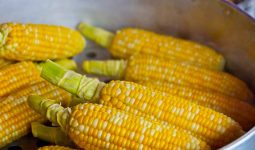Onions are an essential ingredient in cooking. They have a mild, sweet flavor and are easy to grow. If you’re a garden enthusiast, this article is for you.
We have discussed how to plant onions from seed to harvest. You will learn about onion varieties, planting methods, growing tips, harvesting methods, and storage.
How to Plant Onions?
Onion seeds come in many different sizes and shapes. Some are round, while others are long and skinny.
The size of the onion seed determines the size of the onion bulb. Smaller seeds produce smaller bulbs, while larger seeds yield bigger ones.
When choosing an onion variety, look at its shape, color, and size. Look for a variety that balances these traits well.
Also, consider the maturity of the seed. Seeds that mature later tend to be less vigorous than those that mature early.
Location
We can start onion plants indoors or directly in the ground. In either case, starting with small amounts of soil is best. If you don’t get enough sun, you won’t have too many leaves on your onion plant.
Choosing a location where you’ll get plenty of sunlight is also essential. If you live in a cold climate, you may want to start your onions outside, but make sure they are protected from wind and rain.
If you decide to start your onions outdoors, you should prepare them first. Remove any weeds, debris, and old mulch.
Then, add compost, manure, or other organic material to improve drainage. Finally, a layer of fertilizer should be applied around the roots.
If you plan to transplant your onions into the ground, dig holes twice as deep as the root ball. Add some compost, and then place the onion in the hole.
Loosen the dirt around the plant base so that water drains freely. Water thoroughly until all the moisture runs out of the bottom of the pot.
Now, cover the top of the onion with soil. Firm the soil down gently, and don’t pack it tightly. Place the onion in a sunny spot and water it regularly. Your onions will begin to sprout within two weeks.
Once their tops appear above the soil line, remove the covering and continue watering. Keep the soil moist but not soggy.
Check the onions every few days. Pull the leaves out of the ground as soon as they turn yellow.
Storage
You can now let the onions sit in a warm, dry area for several weeks before planting them. During this time, the onions will cure and harden off.
Afterward, plant them in the ground. Space each onion 4 inches apart, and ensure space between the rows. This shouldn’t be hard since we have discussed how to plant onions above.
You can also start onions indoors by placing them in individual containers filled with peat moss. Cover the pots with clear plastic wrap and set them in a warm room. Check the pots daily and give them regular doses of water.
When the tops of the onions reach 1 inch tall, cut back the foliage. Now, you can leave the onions alone for another month or two.
Now, you can move the plants to a greenhouse or grow them in a cool, dark basement. When they’re ready, you can expect to harvest your onions. They should be firm and about 2 inches wide.
Growing Tips: How to Grow Onions?
Growing onions requires patience and attention. However, you’ll reap great rewards once you learn to care for your crop correctly. Here are some tips to help you get the most out of your efforts.
Start With Quality Seed
The quality of the seed you use has a big impact on the success of your crop. Start with high-quality seeds. Look for those labeled “heirloom.”
These varieties tend to produce better crops than hybrids. Also, look for seeds from local sources. Local farmers often know which varieties work well in their particular region.
Choose Good Soil
Before you sow your seeds, check the soil’s pH level. A good range is 6.0 to 7.5. If the soil is too acidic (below 5.5), it may not support healthy growth. If it’s too alkaline (above 8.0), it may cause poor germination rates and low yields.
To test the pH, take a soil sample and dip a litmus paper strip in it. The strip’s color will change depending on the amount of acidity or alkalinity present.
Sow Seeds at the Proper Altitude
Seeds need light to germinate, but they don’t like direct sunlight. Instead, provide indirect light by using shade cloths or other shading devices.
When growing onions outdoors, choose an area where the sun doesn’t shine directly onto the soil. Indoors, place the lights so that they cast shadows on the soil.
Keep the Temperature Moderate
As temperatures rise during the summer months, onions become prone to disease. Try to maintain a temperature of 60 degrees Fahrenheit. This helps prevent diseases that thrive in warmer weather.
Water Often
Onion plants need ample amounts of moisture throughout the season. Watering the soil around the roots encourages root development. It also prevents wilting. Also, wet soil holds nutrients better than dry soil does.
Fertilize Often
Fertilizing often is beneficial for onion plants. It promotes strong, healthy growth and improves the flavor of onions. Apply fertilizer according to the label instructions.
Harvest Onions as Soon as Possible
If you want fresh onions, plant them early in spring. Otherwise, wait until late fall or winter to harvest.








